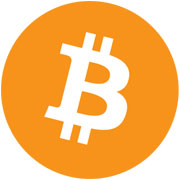
Many entrepreneurs think that it is not possible to bring a smaller company public. They feel that a company needs to have a long track record, as well as show a profit. Actually, neither is a prerequisite to bringing a company public.
Smaller companies that have achieved some level of profitability or can forecast profitability in the near future are good candidates. Some of these companies have gone on to be stock market favorites that trade at a high price-to-earnings (P/E) ratio, thus making their stock very valuable and the founders rich.
Fully Underwritten IPOs
The fact is, however, smaller companies that want to be public via a fully underwritten initial public offering (IPO) will very likely be disappointed. Investment banks want a company that is going to be quickly accepted by the investment community, thus making the investment bankers a good deal of money in a relatively short period of time.
This common investment banking practice makes it unlikely, if not impossible, for the average company to get its stock publicly traded. Additionally, the cost of a fully underwritten IPO can be quite prohibitive. Even a smaller company could very likely incur underwriting costs exceeding US$1 million. These costs are incurred to pay auditors, securities attorneys, printers, underwriters, etc.
So, not only is the so-called traditional route to an IPO all but nonexistent for the average company, but it is also cost-prohibitive even for those companies that might have enough “sizzle” to attract a competent investment banking firm.
Alternative Way to Become Public
However, all is not lost if you want to take your company public. Many companies have gone public through a reverse-merger process. Please see my article that I wrote for the E-Commerce Times on this subject — Reverse Mergers: They’re Back!
The reverse-merger process is rather confusing to many executives of a would-be-public company. However, actually, it doesn’t have to be. Here is how it works:
Your company — the operating company — is merged with another company (usually referred to as a “corporate shell”). After the merger, the stockholders of your company end up owning approximately 90 percent or more of the corporate shell.
At that point, your corporate counsel must file certain documents with the Securities and Exchange Commission (SEC) to be granted permission to trade on a stock exchange. If both your company and the shell corporation have fully audited financial statements, the application to the SEC could be conceivably acted upon and approved within six months.
Your next step is to obtain a trading symbol from the Financial Industry Regulatory Authority (FINRA), the successor to the National Association of Securities Dealers (NASD). This process can take another three months or so. This second step with FINRA is absolutely essential to getting your stock traded on a public stock exchange.
Assuming that all of your documentation is in order, your company can be trading in less than a year, and possibly within six months. On the other hand, a fully underwritten IPO can often take longer than a year, as well as being much more expensive.
Cost of a Reverse Merger
If you were to merge into a reporting shell that was trading on the Over-the-Counter Bulletin Board (OTCBB), the cash cost could exceed $700,000, not counting the stock of your company that you would have to give up. Additionally, you would still have to file extensive paperwork with the SEC.
There is, however, an alternative route to a reverse merger that accomplishes the same end at much less cost. You could merge your company into a non-reporting shell that is not trading on the OTCBB but that has the requisite number of shareholders to qualify for trading.
The cash cost of such a merger with a non-trading shell is substantially less than the cost of a fully reporting OTCBB shell. Yet, the results are substantially the same except for the timing. Under this method, your company should be reporting to the SEC and trading on the OTCBB within six months to a year.
Capital Source Partners can deliver a fully qualified shell for under $100,000 plus — depending on the nature of its business and its stage of development — about 10 percent of the stock of your company. If your company has a good track record with adequate profits, it can conceivably be less than 10 percent. If your company has no profits and no track record, but a lot of promise, you might have to give up more than 10 percent to go public.
Measuring Worth
It’s a very interesting phenomenon that almost invariably your company is worth more if it is publicly traded. In a previous article for the E-Commerce Times, “Multiplying Your Wealth Through an IPO,” I thoroughly explained why this is so.
Simply put, when a company is publicly traded, the marketplace decides on a P/E multiple for the company depending on a variety of factors, including the industry in which the company operates. The P/E multiple, or ratio, for your company as a publicly traded company could be, for example, 20.
Yet, a private buyer would unlikely pay you 20 times your earnings to purchase your company. The likely multiple for a private buyer can range from three to five times earnings. Rarely does it go as high as 20.
The public market is also likely to attach a substantial value to a company with no earnings (and maybe with no real operating history either) based on its technology and/or competitive position in a growing market. Private investors will do the same but generally on more onerous terms to shareholders.
The Right Course?
Taking a company public isn’t for everyone. For some, the paperwork required is either too tedious and/or too expensive. Others, however, like what being public does for their company, such as increasing its market value, giving it national recognition, providing liquidity, being able to use the company’s stock for acquisitions, etc.
Whatever the executives of a company decide to do, they should fully realize that there are a variety of choices available to them. Staying private is one of those choices. Going public is another. Choosing a fully underwritten IPO, though quite expensive and time consuming, is one way to get your company’s stock trading, but it is necessary to find an underwriter that will agree to underwrite the offering.
A reverse merge is another way. Choosing a reverse merger can be costly, over $700,000, or it can be relatively inexpensive, under $100,000.
Whatever path you choose, competent professional advice is always a must.
Good luck!
Theodore F. di Stefano is a founder and managing partner at Capital Source Partners, which provides a wide range of investment banking services to the small and medium-sized business. He is also a frequent speaker to business groups on financial and corporate governance matters. He can be contacted at [email protected].



















































Social Media
See all Social Media